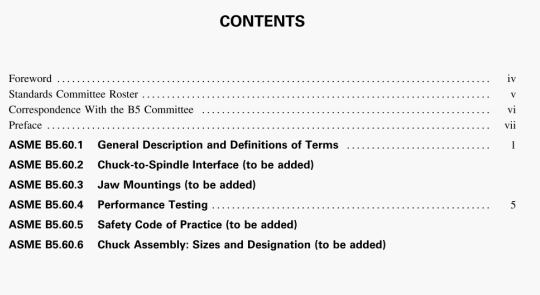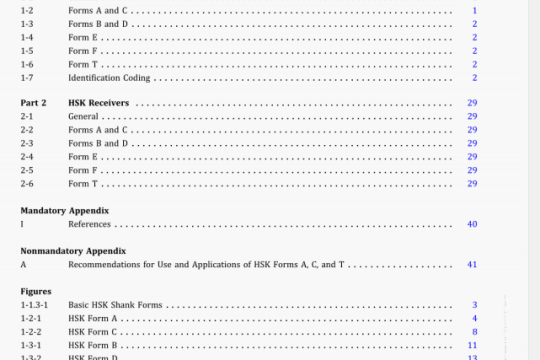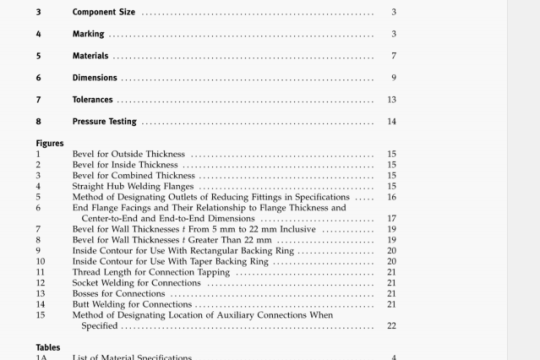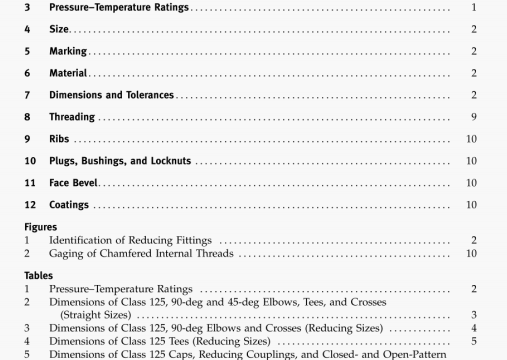ASME B5.50-2015 pdf download
ASME B5.50-2015 pdf download.7 /24 Taper Tool to Spindle Connection for Automatic Tool Change.
NOTE: This excerpt from ISO 1947:1973 and the standards referenced within are nonbinding to ASME B530. Content is shown to clarify the derivation of angular tolerance (AT) grades only. No tolerance system is endorsed nor encoded by inclusion herein. Portions of the original ISO 1947:1973 are omitted for clarity.
B-i SCOPE AND FIELD OF APPLICATION
This international Standard specifies a cone tolerance system which applies to rigid conical workpieces for which the length of the generator can be considered as practically equal to the basic cone length; this applies in the case of cones having a rate of taper C = 1:3 to
1:500.1
For dimensioning and tolerancing cones on drawings, see iSO 3040, Technical drawings — Dimensions and tolerancing cones.2
For general information on tolerances of form and of position, see ISO/R 1101, Tolerances of form and of position — Part I: Generalities, symbols, indications on drawings.
B-2 BASIS OF THE SYSTEM
B-2.1 Types of Cone Tolerance
The following four types of tolerance provide the basis of the cone tolerance system:
(a) cone diameter tolerance, TD, valid for all cone diameters within the cone length, L.
(b) cone angle tolerance, AT, given in angular or linear dimensions (ATC, or ATD).
(c) cone form tolerance, TF (tolerances for the straightness of the generator and for the roundness of the section).
(d) cone section diameter tolerance, TDS, given for the cone diameter in a defined section. It is valid for the cone diameter of this section only.
B-2.2 Cone Diameter ToLerance, Cone Angle Tolerance, and Cone Form Tolerance
Normal cases will be handled by application of the cone diameter tolerance, TD, only. It includes the two tolerances of the types in paras. B-2.1(b) and (c). This means that the deviations of these two types may, in principle, utilize the whole tolerance space given by the cone diameter tolerance, TD (see Fig. B-i). In case of stronger requirements, the cone angle tolerance and the cone form tolerance may be reduced within the cone diameter tolerance, TD, by means of supplementary instructions. In this case, likewise, no point on the conical surface is permitted to lie outside the limit cones’ given TD. In practice, all types of tolerance generally exist at the same time and, as far as normal cases are concerned, each tolerance may occupy a part of the cone diameter tolerance, TD, only in such a way that no point on the conical surface lies outside the tolerance space. In other words, no point on the conical surface is permitted to lie outside the limit cones.
B-2.3 Cone Section Diameter Tolerance
If for functional reasons the cone diameter tolerance is required in a defined section, then the cone diameter tolerance, TDS [para. B-2.i(d)], must be indicated. In this case, it is also necessary to indicate the cone angle tolerance. If general tolerances for the cone angle are specified, e.g., in an international document, and if it is referred to this tolerance, then it is not necessary to indicate special cone angle tolerances.
B-3 DEFINITIONS
B-3.1 Definitions Relating to Geometry of Cones
cone: a conical surface or a conical workpiece (see Fig. B-2), defined by its geometrical dimensions. In the absence of any indication concerning the geometrical form, cone is understood to mean a straight circular cone or truncated cone.
conical surface: a surface of revolution which is formed by rotating a straight line (generator) around an axis with the straight line intersecting this axis at the apex (see Fig. B-2). The parts of this infinite conical surface are also known as conical surfaces or cones. Similarly, “cone” is also the abbreviated designation of a truncated cone.
conical workpiece: a workpiece or portion of a workpiece, the main part of which is a conical surface (see Figs. B-3 and B-4).




